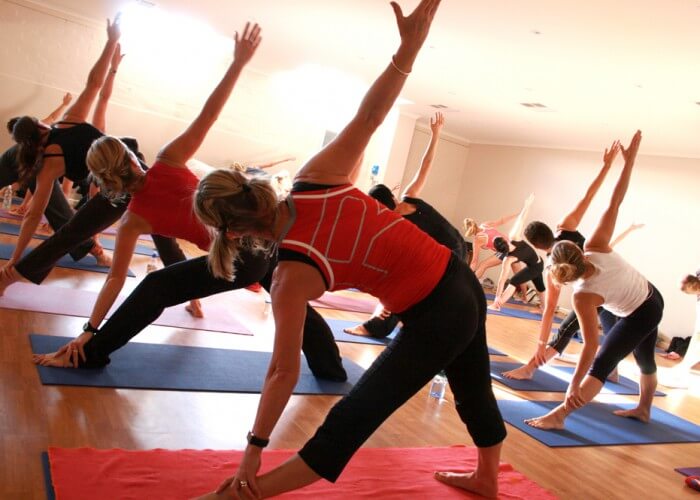Yoga: Passing Trend or Scientific Practice?

By Katie Wingert, Swimming World College Intern.
Yoga has been trendy for quite some time now, and swimmers everywhere, including Rebecca Soni, sing its praises. Flexibility aside, does yoga work? Before rushing to add the meditation, stretching, and balance combo to our weekly routines, it is important to consider whether or not the practice is a mere fad, or whether it is actually helpful for swimmers.
Several recent studies make the case clear: yoga is here to stay, and it can help swimmers with their breathing, concentration, and body alignment.
Breathing
Research demonstrates that yoga improves individuals’ vital lung capacity—in other words, the maximum amount of air that individuals can exhale after taking a deep breath. This vital lung capacity is correlated closely with the maximum inspiratory capacity, or the amount of air that someone can inhale in a deep breath. Current research has not focused on swimmers specifically but considers more general populations and athlete populations.
Since swimming is a sport that requires significant breath control and timing—timing that revolves around underwater exhalation and deep, efficient inhalation in a short period of time—it is more than reasonable to assume that breath training outside of the pool would be even more crucial for swimmers than it is for the general population. What’s more, research demonstrates that yoga breathing exercises are beneficial for asthmatics, so swimmers facing breathing difficulties will benefit from breathing exercises too.
Focus
Still more research suggests that yoga can have psychological benefits for swimmers. One 2013 study specifically worked with a population of swimmers to consider whether adding a one-hour weekly session of yoga to their training regimen would increase their mindfulness and concentration. Although the study attempted to determine whether or not swimmers would score higher on a mindfulness test, the study also asked swimmers to give verbal feedback on whether or not they liked the new addition to their training routine.
Although the test data ultimately did not provide any monumental objective conclusions, the researchers in this first, exploratory study remained positive and emphasized the need for further research. Significantly, swimmers themselves suggested that the weekly yoga sessions allowed them to de-stress, concentrate on ways to improve their technique, and prepare in a relaxed, focused manner for their races.
The sport of swimming requires significant concentration and avoidance of distracting and negative thoughts, so the swimmers’ positive feedback after adding yoga to their weekly routines is significant. Adding breathing exercises, balance poses, and mindfulness exercises may allow swimmers to be more focused on their goals and how to achieve those goals without debilitating anxiety.

Photo Courtesy: Local Fitness
Strength and Alignment
Not only does yoga allow swimmers to feel like they concentrate better and breathe at a higher capacity, but research also suggests that yoga also allows swimmers to improve their strength and alignment. Many yoga balance poses are grounded by the core—a target area in many swimmers’ training regimens, albeit a debated one.
Further, all of the strengthening achieved by yoga is completed in intentional alignment—whether a downward dog, which aligns swimmers’ often-misaligned shoulders and arms, or a tree pose, which requires the same kind of balance and alignment of the back and hips as a streamline. Unlike training in the weight room, where swimmers can get sloppy without immediate consequences, balance poses allow swimmers to know immediately whether or not their bodies are aligned as they should be. This constant awareness could translate into better kinesthetic awareness in the pool as well.
The Verdict: You-Gotta-Yoga
Adding yoga to your weekly training regimen may seem like just another trend to fit in your workout, but current research suggests that even incremental additions of yoga may make all the difference. One study of college students noted that participants’ breathing was improved from fifty-minute yoga sessions two days per week for fifteen weeks.
That means that for most of us, adding yoga to our routine is as simple as picking a couple of days out of the weight room to supplementing our rest with some sun salutations and breathing exercises.
All swimming and dryland training and instruction should be performed under the supervision of a qualified coach or instructor, and in circumstances that ensure the safety of participants.




Streaching
Like it 🙂
Mark Erickson
passing trend? trending for at least 5,000 years… agree wholeheartedly with the conclusion, you gotta yoga!
Ingrid Wilm
?